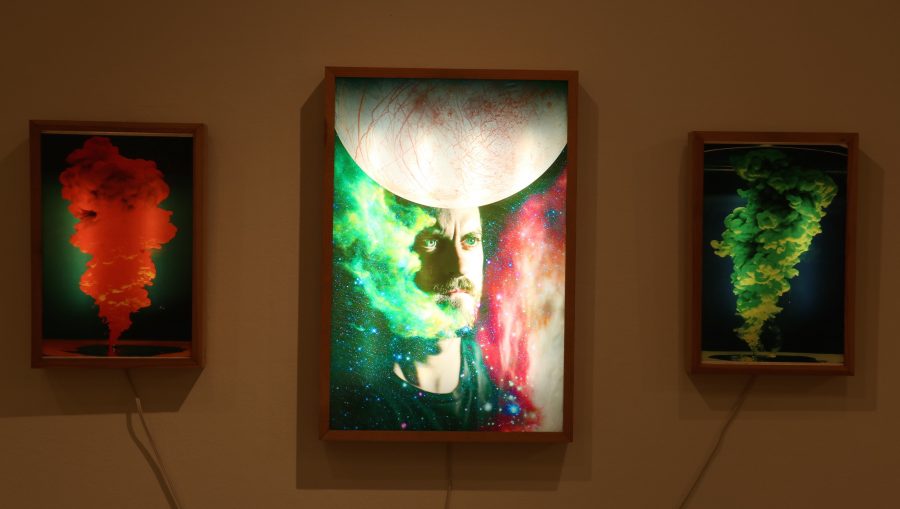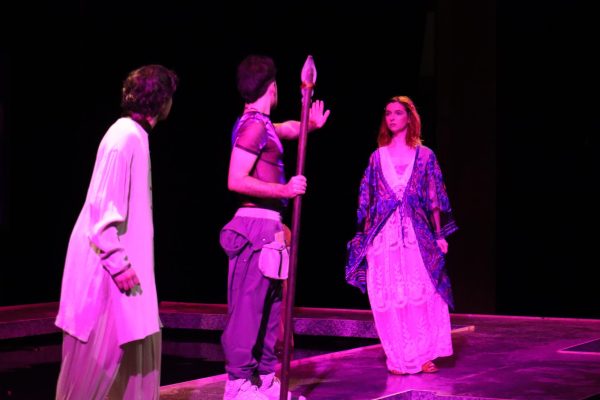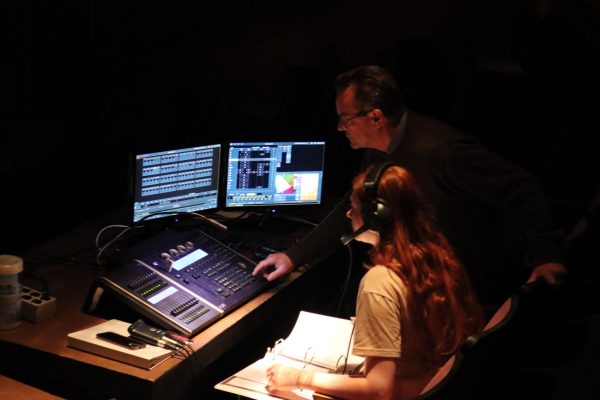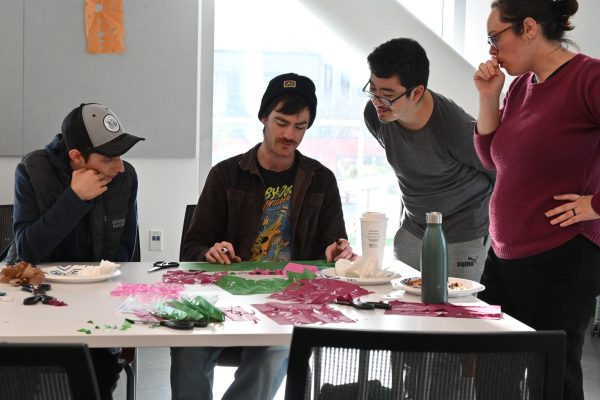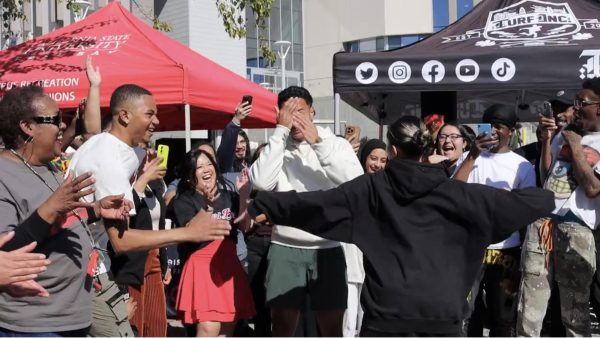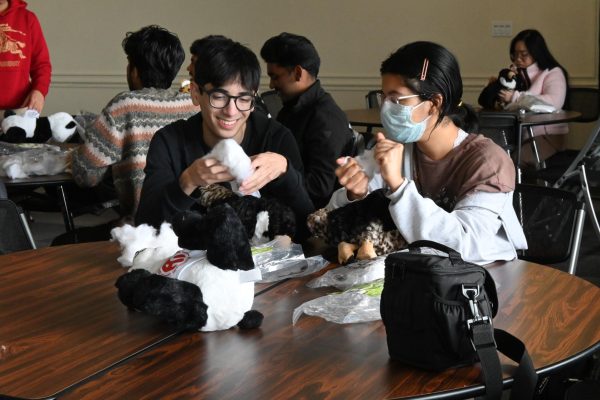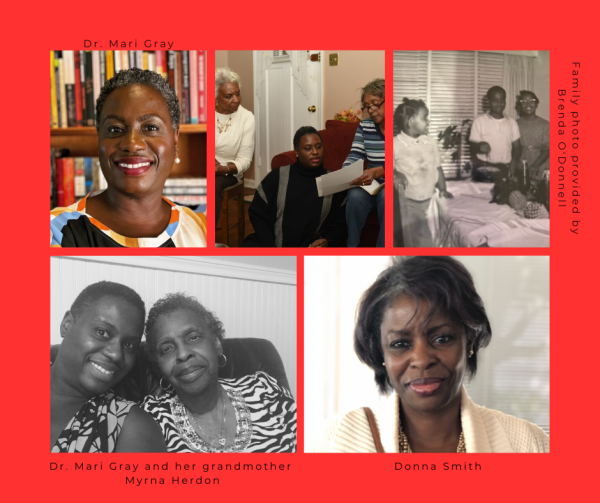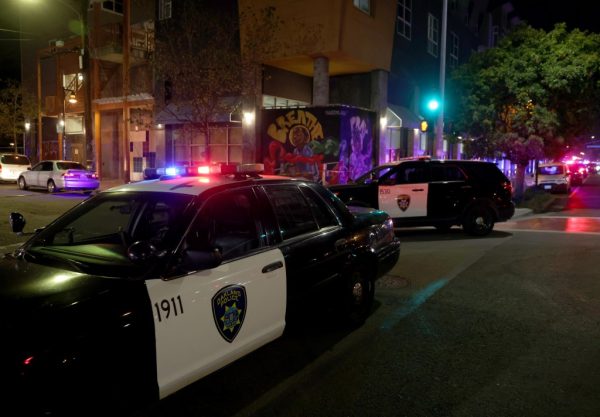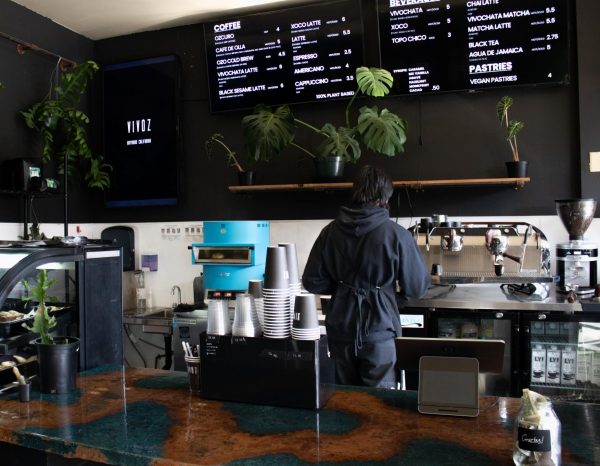Tracing the artist’s constellation: Student featured in campus gallery
All of the particles in our bodies are descendants of dead stars.
The concept, made popular by scientist Carl Sagan in the 1980’s, is also the inspiration behind Cal State East Bay senior Bob Pero’s photo series “Particle Theory” which features portraits of people overlaid with images of stars that were captured by the Hubble Space Telescope.
The series is currently on display at the BFA and Alumni Exhibition on the Hayward and Oakland campuses, which opened Feb. 9 and will run until March 9.
The digital collage of photos, which include a self portrait, are illuminated by a lightbox that Pero made out of a frame, opaque plexiglass and fluorescent lighting to give them “a glowing effect.”
Pero, a photography student in the Bachelor of Fine Arts program at East Bay, said he was brewing on different ways incorporate special effects into his photography, including methods like manipulating light through the use of crystals, prisms, mirrors, fog and other special effects. The idea for “Particle Theory” was composed with this new approach in mind.
“[The series] is about human’s connection with the stars and how we as a society tend to forget that we are a part of stars, we are essentially star matter,” he said. “So I tried my best at creating images that get the subject in touch with the universe and the stars.”
Pero also said a childhood fascination with NASA and the Hubble Space Telescope had a role that inspired the series. “I wanted to explore that stuff but still be grounded on earth,” he said. “As a kid I wanted to be an astronaut. I wanted to explore the stars in my living room and in my kitchen.”
Pero’s photographs have made their way to four art shows within the last month. He estimates that in the past four to five years, his art has hung in anywhere between 20-30 times.
“Particle Theory,” which underwent frequent revisions and improvements during photography classes through East Bay’s BFA program, took over two years to complete.
“It opens people’s eyes to the fact that we’re all made of stars,” Pero explained. “Regardless of whatever trivial bulls— is going on in people’s lives, we all have to remember there’s a bigger picture.”
According to Carolina Gainey-Vejar, East Bay’s art gallery director and chief curator, the BFA exhibition is an annual event that has taken place since the BFA program started 10 years ago. This year, Gainey-Vejar combined the undergraduate show with Art Alumni in an effort to attract more student interest to the program.
Students have to apply to the BFA program through a portfolio review, according to Gainey-Vejar. Because of the selectiveness of the program, less than a dozen students are enrolled each year. “Only our recognized best students continue through this more advanced degree,” said Gainey-Vejar.
There are six undergraduate students and 21 art alumni students — the majority of whom are BFA alumni — participating in this year’s exhibition. Gainey-Vejar said artists don’t have to pay to use the space, however, they must be registered in the BFA program.
Photography is a full-time job for the 28-year-old student, who freelanced for the Oakland A’s, the Oakland Raiders and the Golden State Warriors. He also photographs weddings, portraits and real estate firms. “[I love it] because you’re not sitting behind a desk, 9 to 5,” he said. “You’re meeting people and seeing new things. I was getting bored of working those dead-end jobs.”
Pero comes from an artistic family, however, he said before discovering photography, he felt like an “oddball” because he wasn’t skilled as a drawer or painter, like his mother. Around eight years ago, he found a camera at a thrift store and started photographing adventures with his friends in crumbling buildings and other settings.
Pero said he struggled in the early years trying to prove himself and chasing jobs on Craigslist. Often, they didn’t even respond to his emails. The Fresno native felt that he needed to establish himself in the City, so he rented a 12 by 16 foot gallery space at Broadway Studio, for which he paid between $200 and $300 a month. He shared the gallery with four other artists, who helped him pay for rent.
In Aug. 2012, the group got fed up and moved out and subsequently found a 6,000 square foot warehouse that previously served as an office, where they started their own gallery, which they called Arthouse.
The group pooled their money to pay for rent and constructed a main gallery space, complete with floating walls that hung from the ceiling, typical of a gallery, as well as a bar and a stage area. Pero said it took three to four years to complete.
The gallery hosted workshops and classes, in addition to hanging the work of young artists seeking recognition. They charged $20 a wall per night and people hosted weddings and other events at the location.
“Our objective of the gallery was to cater to the people who were just kind of getting into the art scene; talented artists but didn’t really have the background to be in a legit gallery that was taking a 50 percent commission,” said Pero.
In December, approximately two weeks after the Ghost Ship fire broke out in an Oakland warehouse that had been converted to an “artist’s collective,” an anonymous caller reported Arthouse to the fire department.
The warehouse was inspected annually by the fire department, but the final check revealed zoning permits that had been overlooked, and the gallery was forced to shut down.
“Not to say that I had an ego when I came to this school, but I thought that I knew enough that I could breeze through this program — breeze through classes and get the paper in the end,” said Pero. “I’m trying to keep my eyes open and learn new things every day.”


